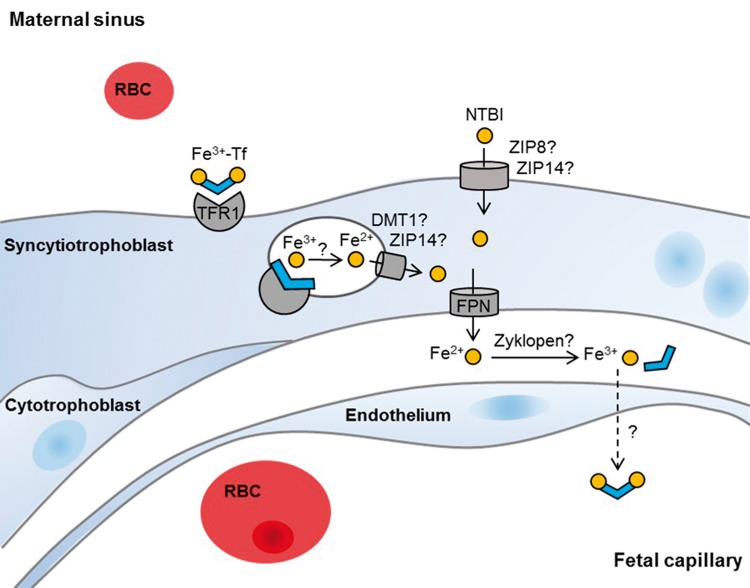Figure 1.
Mechanisms of iron transport across human placenta. Cross-section of a placental villus bathed in maternal blood and surrounded by the multinucleated syncytiotrophoblast. The basal side of the syncytiotrophoblast is in contact with a discontinuous layer of mononucleated cytotrophoblasts or the basement membrane. In terminal villi, fetal capillaries are in close vicinity to the syncytiotrophoblast and are separated only by fetal endothelium. Maternal diferric transferrin (Tf) binds to transferrin receptor 1 (TFR1) on the apical side of the syncytiotrophoblast and is internalized by receptor-mediated endocytosis. Within the endosomes, iron dissociates from Tf and is reduced and released into the cytoplasm via an unknown mechanism that may involve ferrous iron transporters divalent metal transporter 1 (DMT1) and/or Zrt and Irt-like protein 14 (ZIP14). Iron is exported from the syncytiotrophoblast by the iron exporter ferroportin (FPN) and is oxidized to a ferric state by ferroxidases with uncertain identities. Ferric iron likely binds to fetal Tf after exiting the syncytiotrophoblast and is subsequently transported across the fetal endothelium through unknown mechanisms. The placenta may also take up non-Tf-bound iron from the maternal circulation by ZIP8 or ZIP14, expressed on apical side of the syncytiotrophoblast. Abbreviations: DMT1, divalent metal transporter 1; Fe2+, ferrous iron; Fe3+, ferric iron; FPN, ferroportin; NTBI, non-transferrin-bound iron; RBC, red blood cell; Tf, transferrin; TFR1, transferrin receptor 1; ZIP, Zrt- and Irt-like protein

